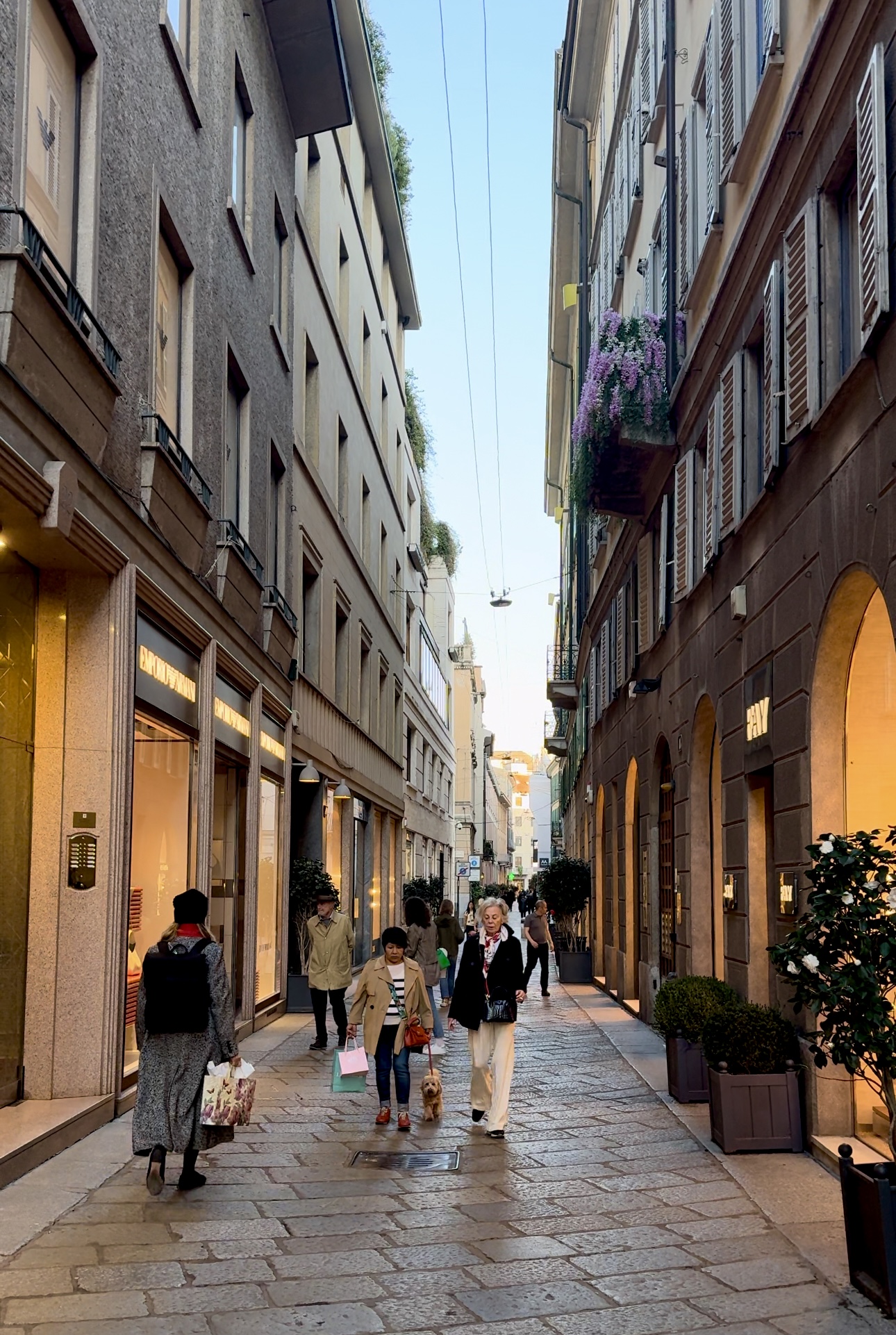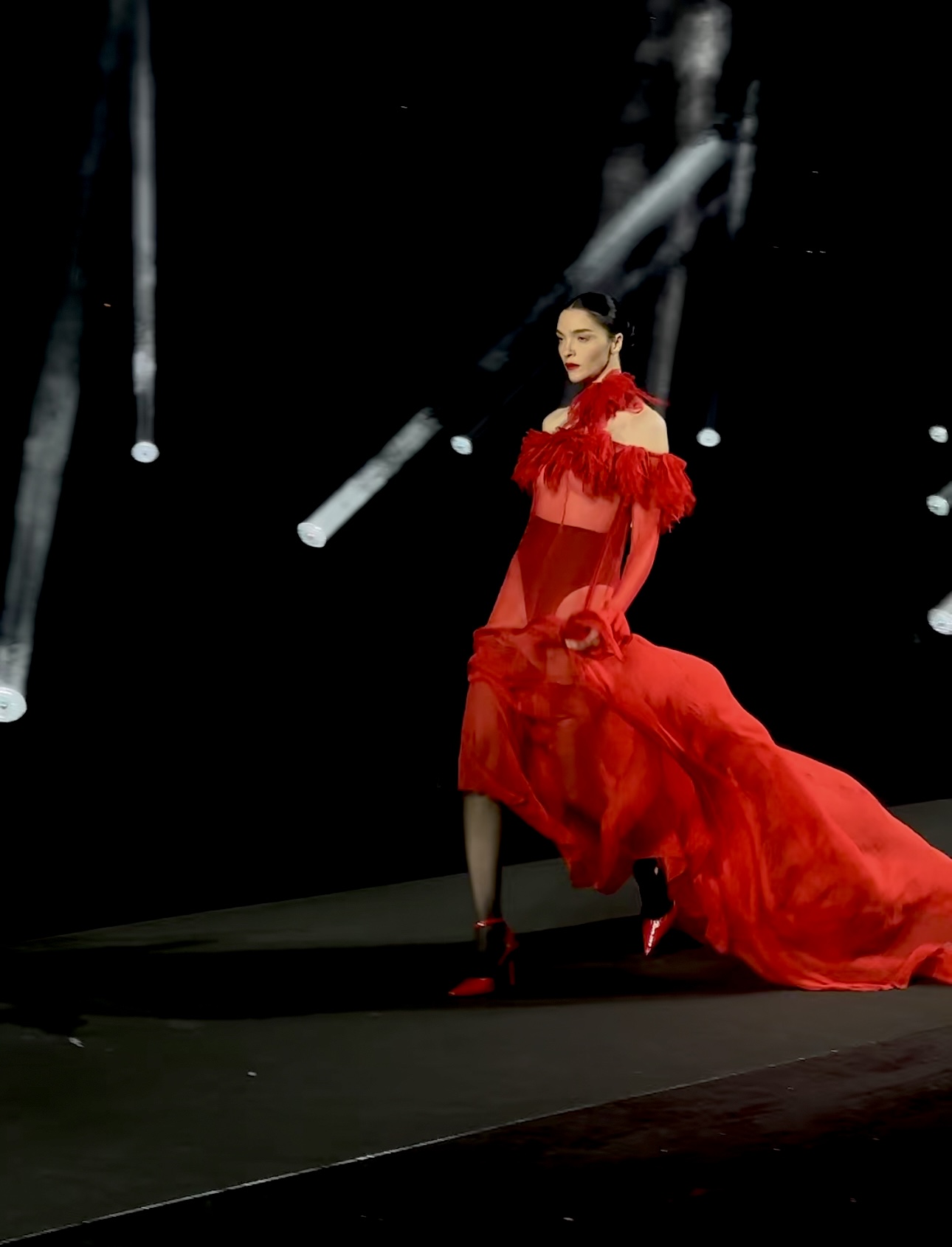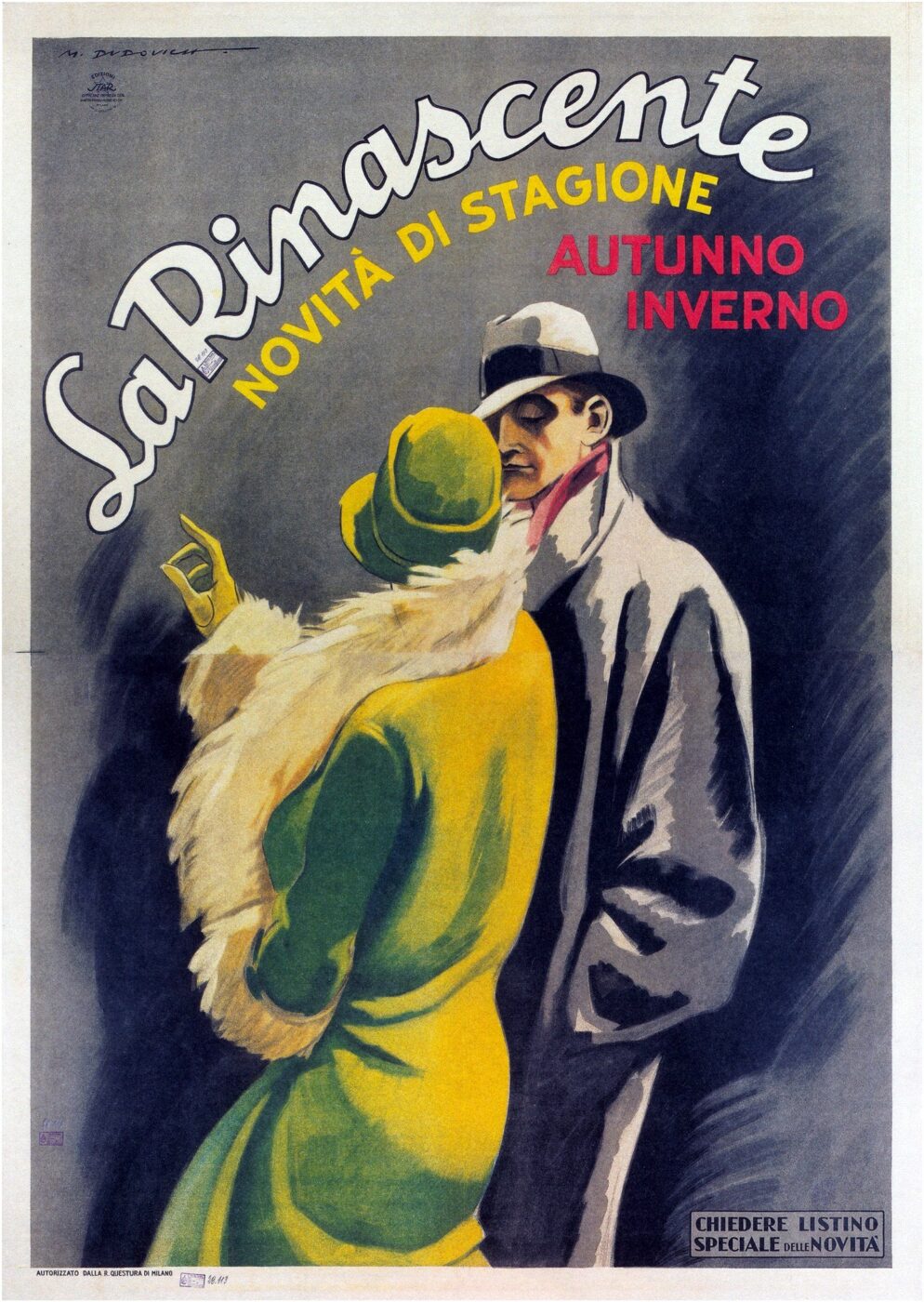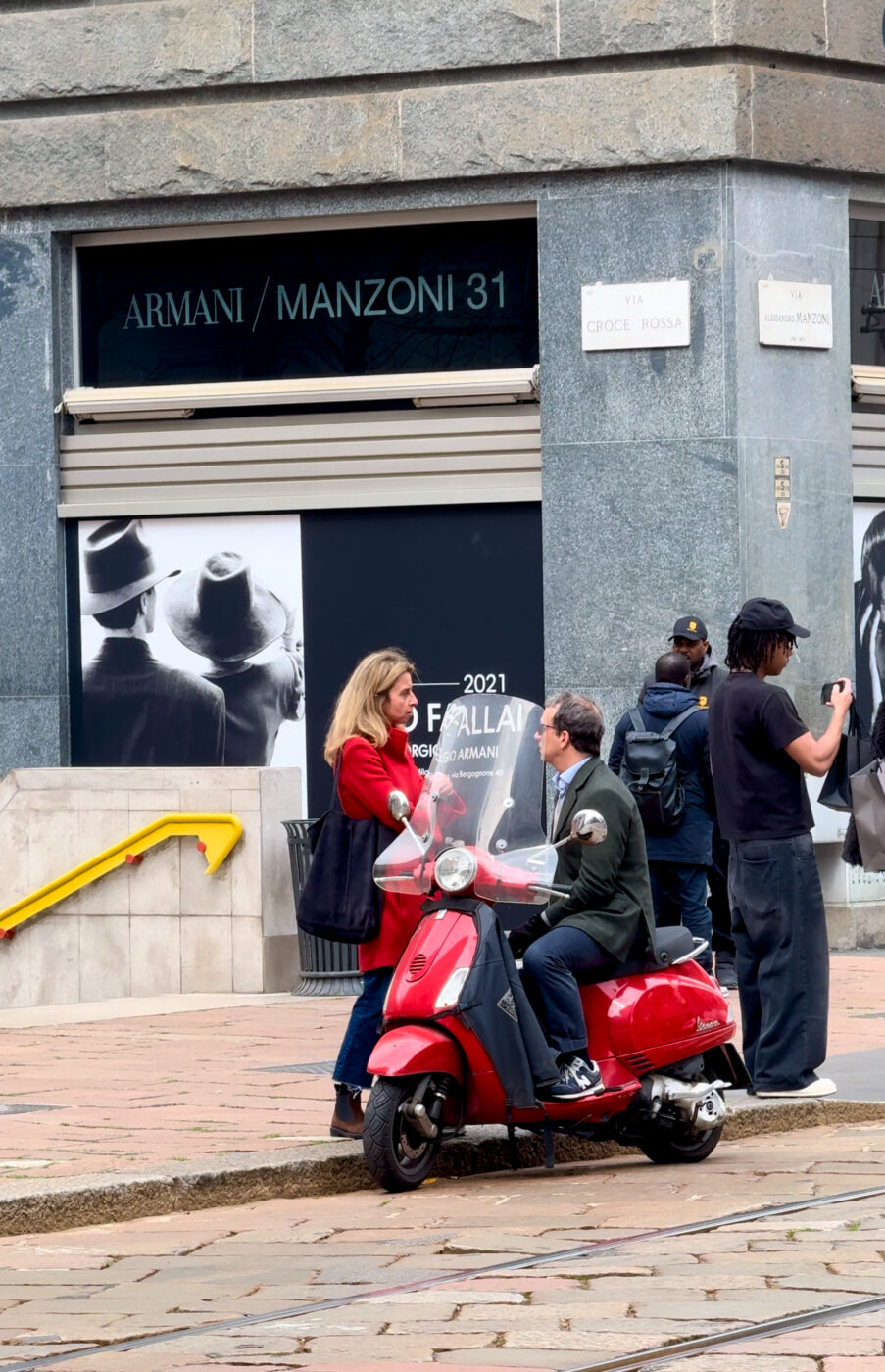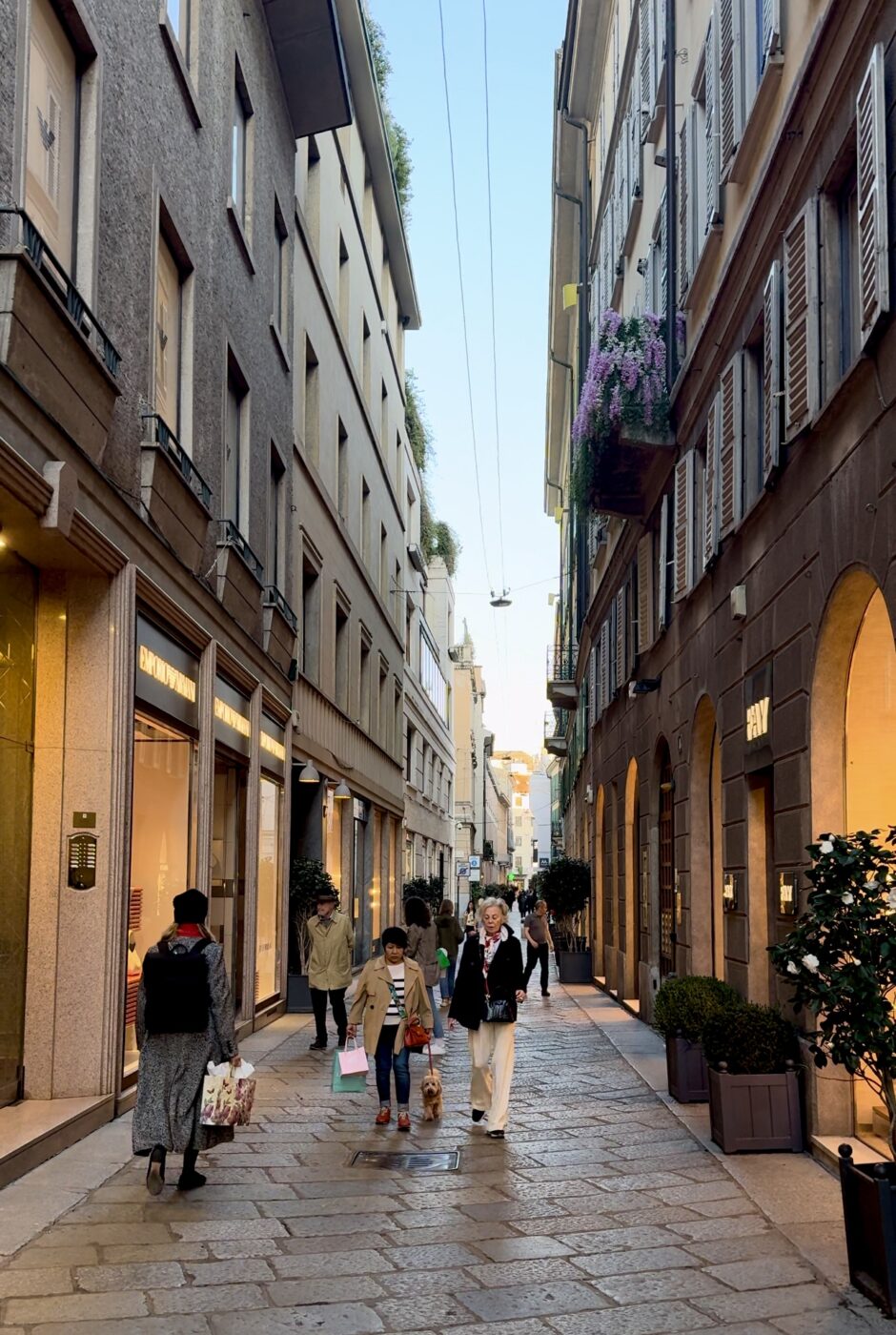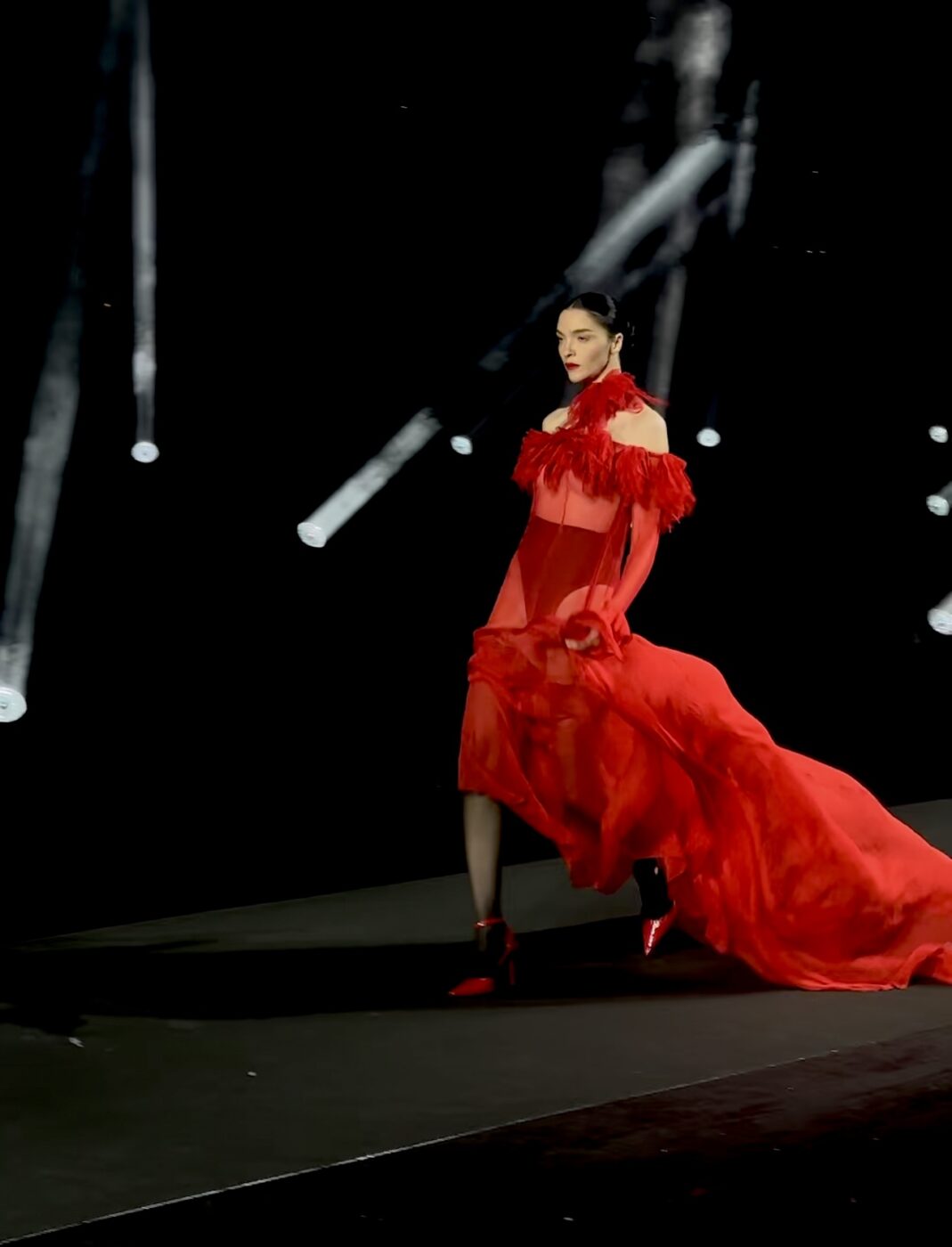Milan, the city where the policemen wear Armani. Well, technically Carabinieri across Italy all wear the label, but it wouldn’t be without the Milanese fashion house that Italy’s law enforcement gained a reputation for being notoriously well-dressed. In fact, all Italians have gained a reputation for being well-dressed–and it can (mostly) be traced back to this very city. Milan is the “fashion capital of the world” for good reason: one of the industry’s illustrious “Big Four”, it’s home to biannual fashion weeks, capital “d” Designers, and Italy’s most stylish it crowd.
Think “fashion capital” and one likely pictures a distinctly modern collage of flashing cameras, dark catwalks, thumping music, glossy magazines. But for all the 20th and 21st century associations with the city’s voguish identity, Milan and the fashion industry have history, and it amply predates the moment Versace’s gaggle of 90s supermodels strutted their way down the runway.
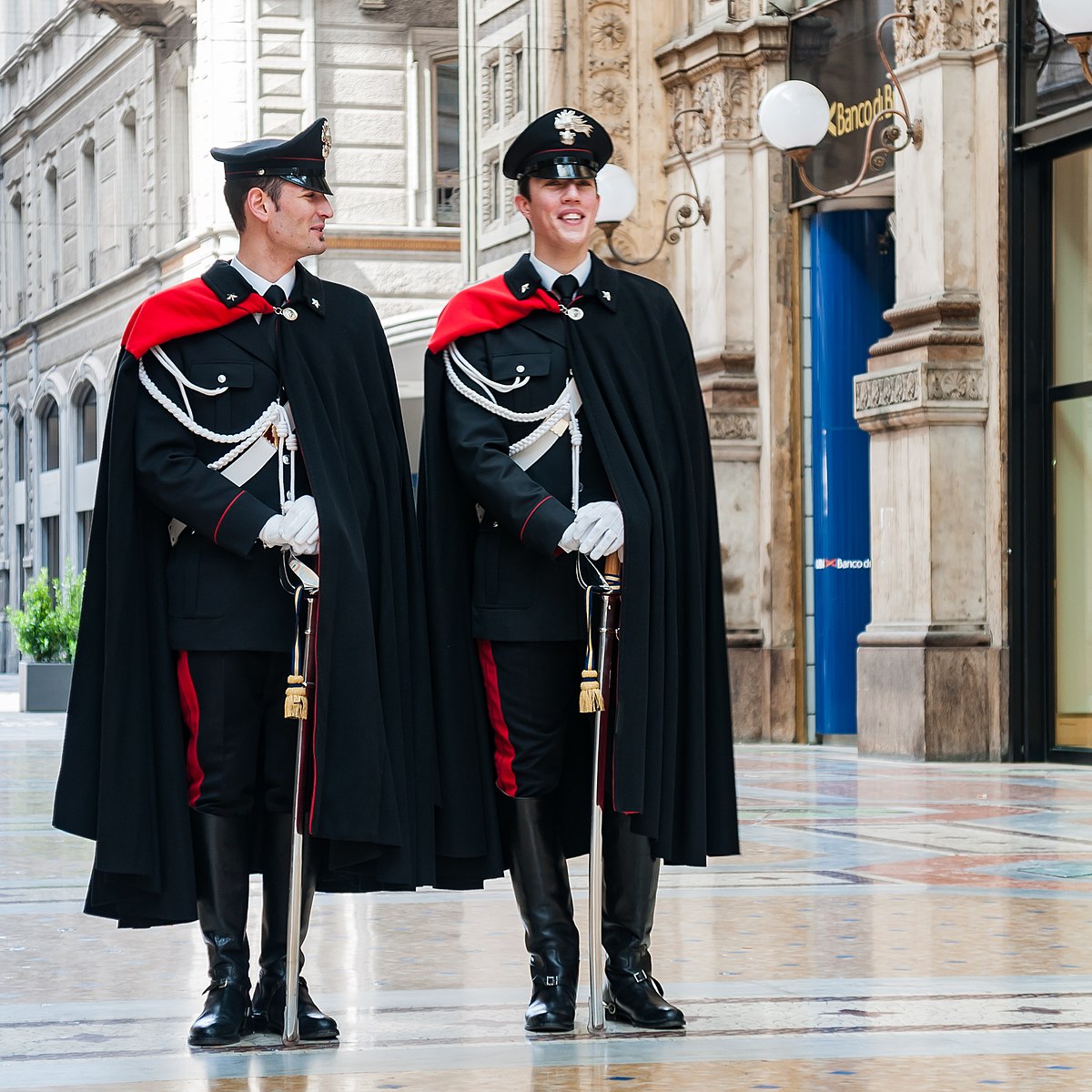
In Milan's Galleria Vittorio Emanuele II; Photo by CEphoto, Uwe Aranas
À La Mode in the Middle Ages
Milan’s capacity for chic commenced in the late Middle Ages and early Renaissance, when it became known as the place to go to purchase luxury goods. Having already flourished as a center of trade due to its geographical position, its takeover by the powerful House of Sforza in 1450 established Milan’s position as a prosperous city, known in particular for its silk processing. This quickly evolved into a production of a range of high-quality materials, such as lace, as well as other costly items like jewelry and hats. The city’s notoriety for the finer things in life quite literally helped it make a name for itself, and the Lombard capital was re-baptized from “Mediolanum”, a Latinized Celtic name meaning “in the middle of the plain”, a reference to the location of the ancient settlement, to “Milan”, inspired by the English word “milaner”, meaning “fine wares”. Quite the rebrand, and one that would eventually pay off.
For the next few centuries, however, Milan’s reputation for sumptuous fabrics remained overshadowed by Florence’s artisanal fashion scene–thriving thanks to the Renaissance and the city’s abundance of wealthy, powerful patrons. Milan was undoubtedly the place to go for raw textiles, but “fashion” was found in the avant-garde designs being whipped up by the Florentine tailors and seamstresses.
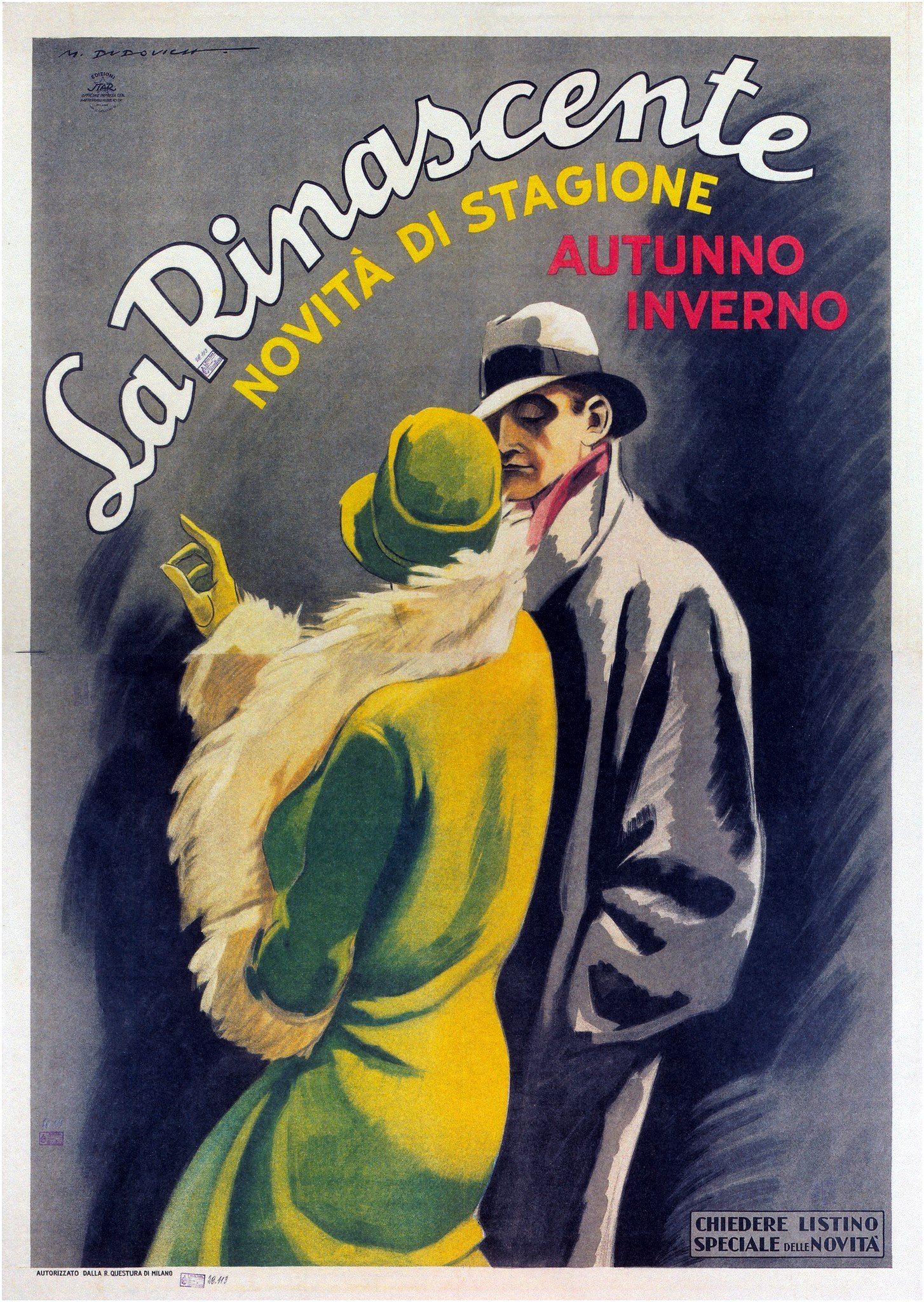
Marcello Dudovich ad for La Rinascente (1926)
The Influence of the Industrial Revolution
The tide began to turn, however, in the 19th century, when Milan’s previously unglamorous industrial identity began to lend the city its own distinct style when it came to fashion design. The appreciation of textiles over trends meant that the focus remained on simplicity, functionality, and quality. Fuss and frills were glossed over in favor of quiet, finely executed tailoring, an attribute that has now become synonymous with Italian design worldwide. The city’s interest in fashion steadily grew, and in 1865, the Bocconi brothers opened the first shop in Italy to sell ready-to-wear clothing on Milan’s Via Radegonda. This was followed by their opening of the country’s first department store in Milan just a few years later, originally called Alle Città d’Italia, and renamed in 1921 to the now infamous La Rinascente. Its construction revolutionized the way clothes were sold and distributed in the modern city, with the store aiming to sell luxury products without the usual high prices, opening up fashion to customers of lower income.
By the turn of the century, the Milanese themselves had become decidedly “fashion conscious”, able to invest in luxury tailoring that was more affordable than its Florentine and Roman counterparts. By the 1950s, the major Italian cities had each established its own fashion identity: Rome was known for its haute couture, Florence for its handmade clothing. Milan, thanks to the influence of the Bocconi brothers and in a nod to its industrial background, was now renowned for its “ready-to-wear” clothes, which remained a novelty concept in an age when clothes typically continued to be tailor made.
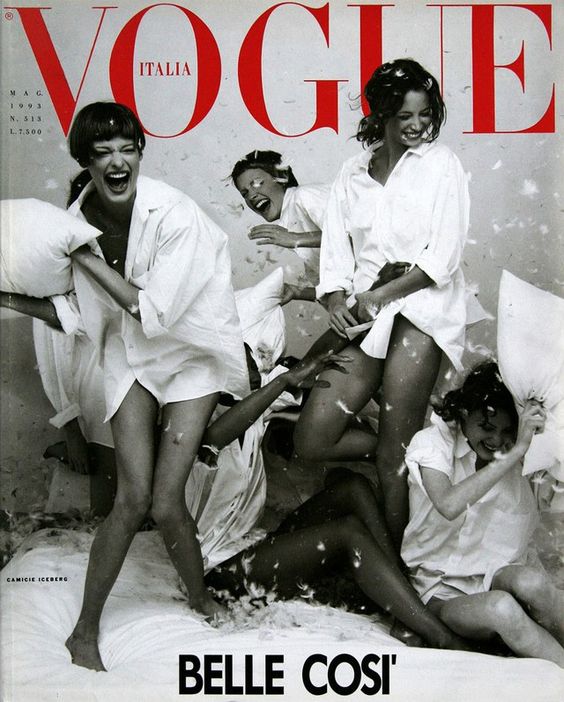
1993 Vogue Italia cover by Franca Sozzani
Fashion Week Moves From Florence to Milan, and It’s in Vogue
Despite Milan having a distinct sartorial angle, however, Florence still reigned as fashion capital of Italy. Since 1951, it had been home to fashion shows held at the Palazzo Pitti, showcasing designs by the likes of Emilio Pucci and the Fontana sisters. The shows were a hit, but the city’s success became its own downfall. Florence’s infrastructure was unable to deal with the huge crowds flocking from across the world to see the latest of Italian fashion design, and it was decided that the shows would be moved to Milan. Milan Fashion Week was born, making its debut in 1958.
Basking under a long-awaited spotlight, the Milan fashion scene finally began to take off in earnest. The city’s industrial past worked once more to its advantage, with its wealth of printing manufacturers and publishing houses making it the perfect petri dish for the growth of the fashion magazine. Milan had the means to promote Italian brands to the masses, and became the major force of Italy’s fashion media, with the newly instated Vogue Italia establishing its headquarters there in 1961. As the influence of the magazines grew, designers, photographers, models, and writers flocked to Milan, all vying to be part of the nascent fashion network. Vogue’s decision cemented the city’s newfound status as trendsetter: people might have preferred to shop in Florence, but they could read about what to shop in Milan.
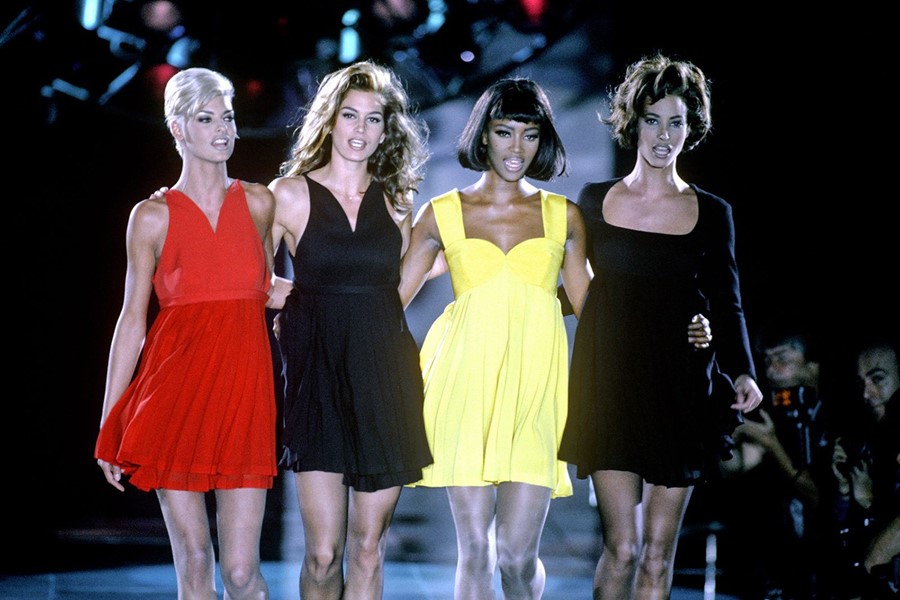
Catwalk finale of Gianni Versace's A/W91 show
The Ready-to-Wear Revolution (Thanks Versace and Armani!)
Come the 1970s, and the popularity of prêt-à-porter skyrocketed, making the city the go to place for clothes to go. Milan offered designs that were more affordable than the haute couture being shown in Paris, and its functional, simple style was making waves in Europe. Milan-based designers Gianni Versace and Giorgio Armani stormed their way onto the fashion scene, and were met with unanimous acclaim. Their clothes represented an exciting new polarity to Milanese fashion design: Versace’s revealing cuts, eye-catching prints and bold colors were a world away from Armani’s minimalist style. Their rivalry was embodied in a popular saying: “Armani dresses the wife, Versace dresses the mistress.”
Both brands came to be seen as characteristic of the Milan fashion scene, with their stark contrast embodying the individuality that was being welcomed by new designers. Giorgio Armani said of Milan that it was a “true metropolis: strong and fearless, but welcoming too,” revealing that “little by little, I came to realize that I could become someone here.” Become someone he did, and between Gianni, Giorgio, and the ready-to-wear revolution, Milan Fashion Week was launched into international limelight. It was (and still is) an event attended by the movers and shakers of the industry and beyond, all clammering to witness the latest from Italy’s hottest labels. Its notoriety reached a veritable peak in 1991, with a Versace show in which Cindy Crawford, Naomi Campbell, Christy Turlington, and Linda Evangelista strode arm in arm down the runway, clad in Versace (what else?) and lip-synching to George Michael’s “Freedom!”. The runway moment is revered as both one of the most iconic in fashion history, and the birth of the supermodel. Milan had made its mark, undoubtedly becoming the fashion capital of the world, a title it was officially awarded by the Global Language Monitor in 2009.
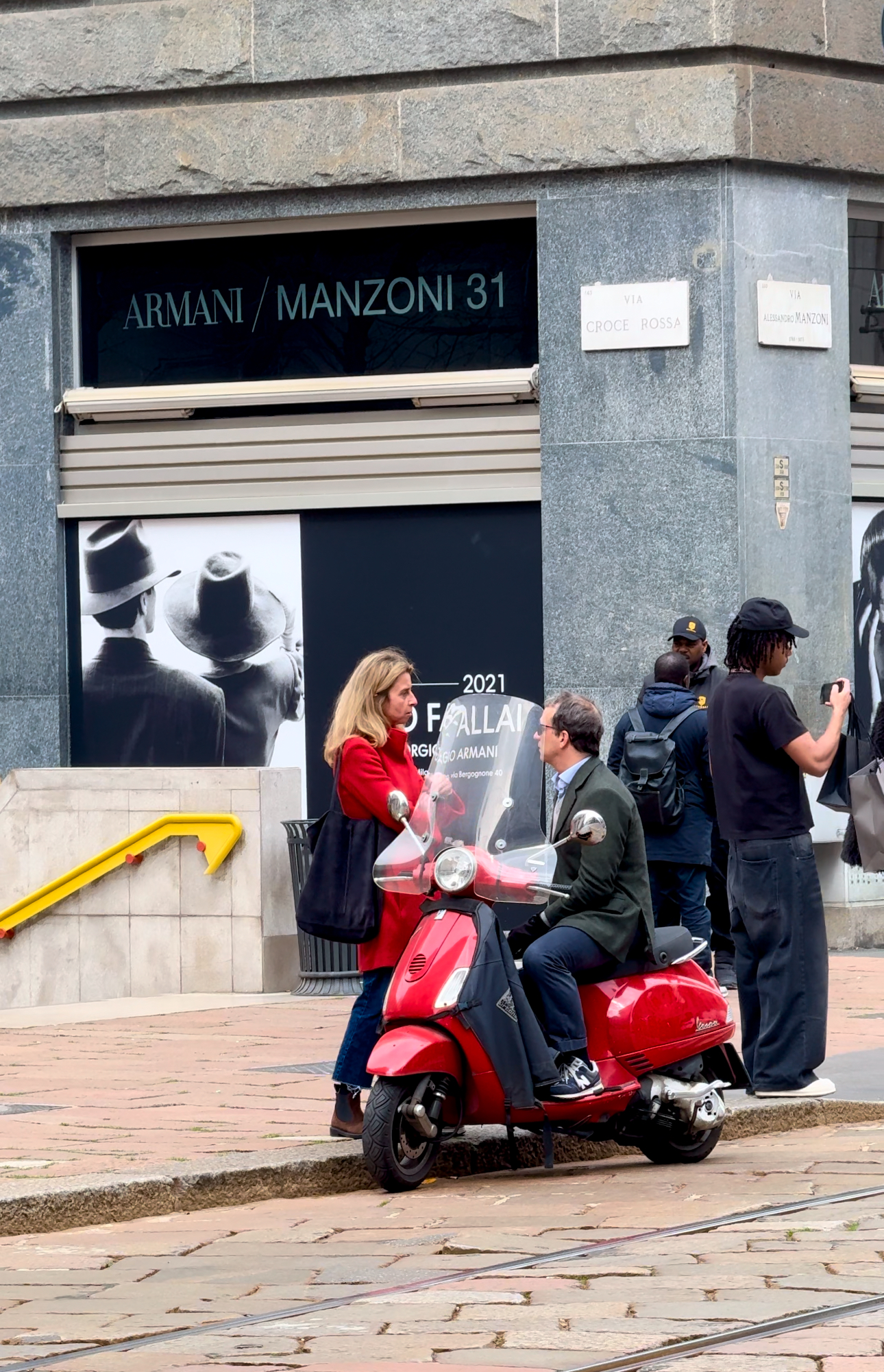
Milan, A Fashion Powerhouse
Today, the city is home to over 12,000 fashion companies and houses the headquarters of most major Italian labels. Walk the streets of the Quadrilatero d’Oro, Milan’s fashion district, and what you see in the shatter-proof shop windows is an eye-wateringly expensive display of cultural identity. That is not to say that Milan’s roots should be forgotten; factories and fabric paved the way for Vogue and Versace, and its industrial past is the foundation upon which the modern glitz and glamor of its luxury fashion shops reside. From carbon comes diamonds, and a sparkling fashion powerhouse Milan is today–one whose streets have not only created a whole new meaning for the term “fashion police” but have raised designers who, in turn, have raised the city.
